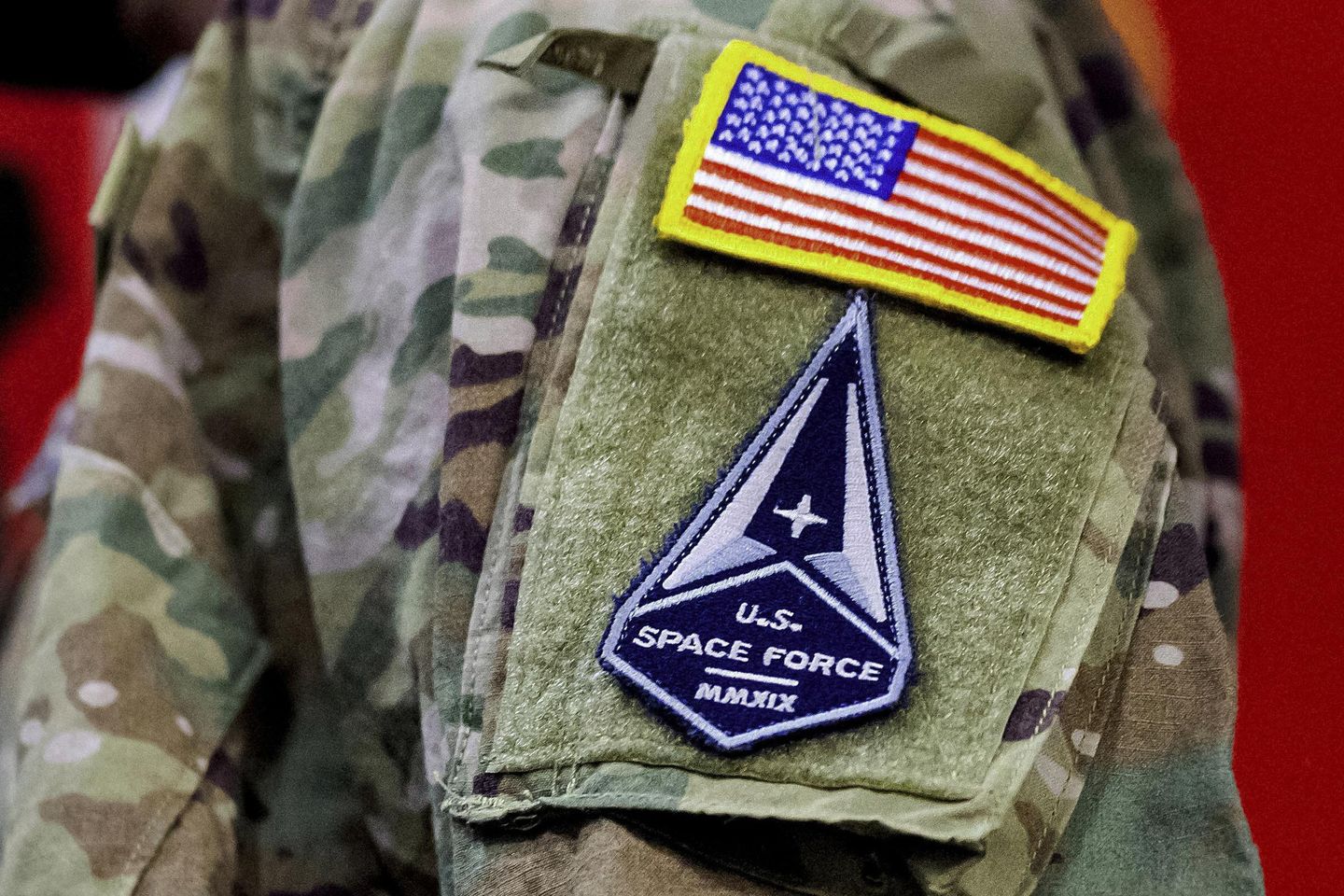
President Trump is weighing the appointment of a high-level “Golden Dome czar,” according to several sources familiar with the deliberations as momentum grows and stakeholders line up behind the administration’s push for a next-generation missile defense shield to protect the entire continental United States.
Such an appointment would underscore the urgency and the complexity of the effort, which will require various arms of the federal government — from the White House and Congress to the U.S. Space Force, the Missile Defense Agency and others — to work in concert with private defense contractors designing and building space-based missile interceptors, as well as advanced command and control infrastructure.
The administration has reiterated its commitment to the Golden Dome project during recent weeks. Mr. Trump’s fiscal 2026 budget request proposes a record $1 trillion in defense spending, a 13% increase over the prior year, partly driven by the missile defense push. The budget, the White House said, “makes a down-payment on the development and deployment of a Golden Dome for America … that would protect the U.S. from missile threats coming from any adversary.”
But more questions than answers are swirling around the initiative. It remains to be seen which agency or agencies will be tapped to lead the implementation and operation of whatever system ultimately gets built. And there is a sense across the national security community that the slow-moving nature of the Pentagon’s acquisition process will require serious adjustments or workarounds in order to produce Golden Dome in a matter of years, rather than decades — let alone at a price tag Americans are willing to stomach.
The appointment of a Golden Dome czar could be essential to addressing those questions. Sources familiar with the Trump administration’s deliberations say Gen. Michael A. Guetlein, vice chief of space operations at the U.S. Space Force, is being closely considered, although it’s unclear precisely how much power he, or whoever ultimately gets tapped, will have over the acquisition process.
Regardless, defense industry insiders say Golden Dome is necessary to safeguard the U.S. homeland from ballistic and hypersonic missile attacks.
“With China and Russia investing heavily in the capability to carry out such attacks, particularly on the hypersonic front, Mr. Trump is right: We absolutely need an advanced missile defense shield,” said Tory Bruno, president and CEO of United Launch Alliance (ULA), a top developer of some of the most advanced rockets in the world and a key player in the race for missile defense.
“The good news is that it is finally possible,” Mr. Bruno wrote in a recent op-ed for The Washington Times. “A practical American Golden Dome could begin deployment right now. Even better news is that several existing agencies, such as the Missile Defense Agency, the Space Development Agency and the U.S. Space Force, could oversee this effort.”
Mr. Bruno and other specialists say the system should be comprised of three elements: a space-based layer of interceptors, sea-based missile defense systems off both American coasts and in the Gulf of America, and Terminal High Altitude Area Defense, or THAAD, anti-ballistic missile defense batteries at strategic locations across the U.S. as a final layer of defense to guard major cities in the event a missile makes it through the first defensive layers.
Tracking hypersonics from space
National security experts generally agree that China and Russia have outpaced the U.S. in hypersonic weapons development in recent years — a reality that factors heavily into the planning for Golden Dome.
China tested a fractional orbital bombardment system in 2021 that featured hypersonic technology and displayed a capability for circumventing the U.S.’ most advanced existing missile defense systems.
The Chinese test was “a wake-up call,” according to Ed Zoiss, president of space and airborne systems at L3Harris Technologies, a Florida-based firm that made headlines last year when several satellites it had designed and built were launched from Cape Canaveral Space Force Station as part of the U.S. military’s push to develop hypersonic tracking capabilities.
L3Harris has worked with both the Space Development and Missile Defense agencies on launching Hypersonic Ballistic Tracking Space Sensor (HBTSS) satellites, which the company as described as capable of tracking “maneuvering hypersonic missiles flying beyond the range of today’s ballistic missile detection capabilities.”
The executive order issued by Mr. Trump earlier this year specifically called for the “acceleration of the deployment” of an HBTSS satellite layer as part of the Golden Dome development push.
The system is highly advanced. Mr. Zoiss said in a recent interview with The Washington Times’ “Threat Status Influencers” video series that the system tracks missiles using infrared technology, which can be tricky with futuristic hypersonic glide missiles, whose speeds change in more complex ways than conventional intercontinental ballistic missiles.
The goal of this satellite is to find [the] dim heat signature for that hypersonic weapon and then to track it,” he said. “We demonstrated that over the last 13 months — that it can be done from space.”
Such a multi-layered system could take down most ballistic missile threats, specialists say, though the evolving landscape of futuristic hypersonic weapons could eventually require even more advanced defense capabilities, such as directed energy weapons.
Autonomous satellites
The core idea of the Golden Dome can be traced back to the Reagan era and the proposed Strategic Defense Initiative, colloquially known as the “Stars Wars” program.
“The technology we have today is far different than we would have had during President Reagan’s era, when he also had a similar initiative but the technology wasn’t available to us,” said Andrea Inserra, president of the Global Defense Sector at Booz Allen.
The firm recently published a futuristic plan for what Golden Dome could look like. The plan, called “Brilliant Swarms,” features a fleet of as many as 2,000 interconnected satellites equipped with machine learning artificial intelligence to achieve full autonomy in missile tracking operations.
“For people in the industry, when we think about the space assets we have today, the combination of peer-to-peer networks, and the combination of [artificial intelligence], you put those three capabilities together and you can actually create space-layered missile defense capabilities for the United States that … was not possible during the Reagan era,” Ms. Inserra said during a recent exclusive interview on the “Threat Status Weekly Podcast.”
Retired Air Force Lt. Gen. Henry “Trey” Obering III, a former director of the Missile Defense Agency who is now with Booz Allen, added in a recent interview with The Times that such a system will probably cost far less than most people think.
Mr. Obering said the U.S. could put as many as 1,000 space-based missile interceptors in orbit for about $20 billion — or one-third of the cost of the George W. Bush administration’s major THAAD initiative two decades ago to counter potential missile threats to the West Coast emanating from North Korea.
The total system, including more THAAD batteries and sea-based missile defense systems, could cost significantly more than that, especially when long-term maintenance and upgrades are factored in.
Scramble among defense companies
Mr. Trump’s executive order has sparked a scramble of competition and collaboration among defense companies large and small for a potential piece of the Golden Dome funding pie.
It remains to be seen which companies will factor most prominently into the Trump administration’s plan. Sources close to the White House say there has been heated deliberation among the president’s advisors over which defense contractors to put in the lead, with a specific question centering on the extent to which newer players on the defense industrial scene may be involved.
Reuters reported last month that Elon Musk’s rocket and satellite company SpaceX, along with software maker Palantir and drone builder Anduril, had emerged as frontrunners among some members of Mr. Trump’s national security team in the competition for Golden Dome contracts.
Industry sources have also cited a range of other emergent defense tech companies as potential players as the push for the next generation missile defense shield evolves.
But the biggest defense contractors are also positioning themselves.
“This mission can’t be left to chance with unproven technology — the mission must be met with proven capability providers, who can deliver the greatest innovation, with high reliability, at scale, and ahead of need,” states a “Golden Dome for America” website published by Lockheed Martin.
“From surface to space, Lockheed Martin is delivering combat-proven layered defense solutions so the U.S. and allies can stay ahead of accelerating threats,” the website states. “Our integrated air and missile defense systems provide the most advanced radars and sensors, command and control networks, satellites, targets, interceptors and directed energy systems in the world.”



![‘It’s a Recipe for a Hundred Years of National Dominance’: Stephen Miller [WATCH]](https://www.right2024.com/wp-content/uploads/2025/05/Stephen-Miller-Completely-Obliterates-CNN-Host-Over-Her-Illegal-Immigration-350x250.jpg)
![Trump Posts Hilarious Pope Meme, Leftists Immediately Melt Down [WATCH]](https://www.right2024.com/wp-content/uploads/2025/05/Trump-Posts-Hilarious-Pope-Meme-Leftists-Immediately-Melt-Down-WATCH-350x250.jpg)



![Mother Breaks Silence After Three Daughters Killed During Father’s Custody Visit, Memorial Held [WATCH]](https://www.right2024.com/wp-content/uploads/2025/06/Mother-Breaks-Silence-After-Three-Daughters-Killed-During-Fathers-Custody-350x250.jpg)

![Pentagon Begins Booting Trans Troops After Supreme Court Greenlights Ban [WATCH]](https://www.right2024.com/wp-content/uploads/2025/05/Pentagon-Begins-Booting-Trans-Troops-After-Supreme-Court-Greenlights-Ban-350x250.jpg)





